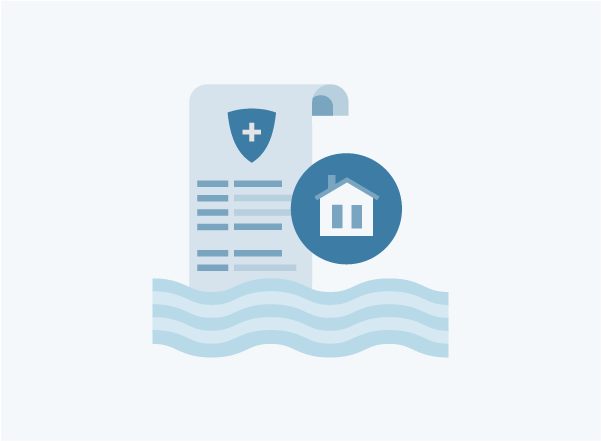Revision Methods
Revision Options
Check Your Request's Status
With over 20,000 communities participating in the National Flood Insurance Program (NFIP), it is a challenge to keep flood hazard maps up to date. There are three primary methods by which a community's flood hazard maps are updated.
Revision Methods
FEMA-Initiated Map Updates
Each year, FEMA initiates studies and restudies of flood hazards in communities across the U.S. for the creation, as well as the revision, of community flood hazard maps. Because of funding constraints, however, FEMA can study or restudy only a limited number of communities each year. As a result, FEMA prioritizes study and restudy needs based on a cost-benefit approach whereby the highest priority is given to studies where development is greatest and where the maps are most outdated.
Community-Initiated Map Revisions
The flood hazard maps must present flood risk information that is correct and up to date to ensure that they provide a sound basis for floodplain management and insurance rating. FEMA relies heavily on communities to provide notification of changing flood hazard information and to submit the technical support data needed to reflect the updated flood hazards on the NFIP maps. Although revisions may be requested to change any of the information presented on the NFIP maps, FEMA generally will not revise an effective map unless the changes involve modifications to Special Flood Hazard Areas (one percent annual chance floodplains or flood elevations).
Requests for revisions that involve other information (e.g., roads or corporate limits) will typically be filed for future use. To assist in the map revision process, FEMA has developed Application/Certification Forms and Instructions for revisions to NFIP maps.

Community Members' Guide to Initiating Map Revisions
When a preliminary flood map is released, learn how to:
- Identify your flood risk
- Review the potential impacts on your flood insurance
- Understand the options if you disagree
Go to the Community Members' Guide
Community-Initiated Map Revisions Through the Cooperating Technical Partners Initiative
The Cooperating Technical Partners (CTP) initiative is an innovative program created to foster partnerships between FEMA and participating NFIP communities, as well as regional and state agencies that have the capability to become more active participants in the FEMA Flood Hazard Mapping Program. Communities can participate in a number of ways, which may include development of updated hydrologic and hydraulic modeling, and mapping, refinement of approximate Zone A floodplain boundaries, digital base map data sharing, and digital topographic data development.
FEMA is seeking qualified partners to collaborate in maintaining up-to-date flood maps.
Become a Cooperating Technical Partner
Map Revision Processing Options
Once initiated, FEMA will process a request to revise the flood hazard maps based on as-built conditions by one of two methods: Physical Map Revision or Letter of Map Revision.
Physical Map Revision (PMR)
A Physical Map Revision (PMR) is an action whereby one or more map panels are physically revised and republished. A PMR is used to change flood risk zones, floodplain and/or floodway delineations, flood elevations, and/or planimetric features.
To ensure that those affected by the PMR have the opportunity to provide input, a PMR has procedures that include a community comment period and a six-month compliance period to update ordinances while the new maps are printed and distributed. Because of the large amount of flood hazard information that is incorporated into the maps and the number of people that will be affected by that information, a PMR can take as long as 18 months to complete.
FEMA charges the requester of a PMR a fee for review of the data submitted in support of certain types of requests such as those concerning structural measures. PMRs must be requested by the Chief Executive Officer (CEO) of the community because the community is responsible for adoption of the revised flood hazard information into their specific floodplain management ordinances and regulations.
Letter of Map Revision (LOMR)
A Letter of Map Revision (LOMR) is a document that officially revises a portion of the effective NFIP map according to requirements and procedures outlined in Part 65 of the NFIP regulations. A LOMR allows FEMA to revise flood hazard information on an NFIP map via letter without physically revising and reprinting the entire map panel. This process typically takes less time and is less expensive than a PMR.
LOMRs include the revised portion of the flood hazard map, affected flood profiles, and floodway data tables from the Flood Insurance Study (FIS) report as attachments to the letter. LOMRs are essentially like PMRs in that they are used to change flood risk zones, floodplain and/or floodway delineations, flood elevations, and/or planimetric features; however, because of their limited distribution, LOMRs are primarily intended for small areas of change and areas where flood hazards are typically decreasing.
FEMA charges the requesters of LOMRs a fee for review of the flood hazard data submitted in support of certain types of requests such as those concerning structural measures. As with PMRs, a LOMR must be requested through the CEO of the community because the community is responsible for the adoption of the revised flood hazard information into the community's floodplain management ordinances and regulations.
Checking the Status of Your Request
Property owners or other persons who wish to follow the progress of a particular PMR, LOMR, or other map revision are advised to consult the community's Floodplain Administrator. This is the local official who keeps all of the community's flood hazard maps and FIS report, and who corresponds with FEMA at various stages of the revision process. Often this is an official such as the city/county engineer or the director of planning or zoning administrator.
Check the Status of Ongoing Map Revisions
For assistance, contact the FEMA Map Information eXchange or call toll free at 1-877-FEMA MAP (1-877-336-2627).


